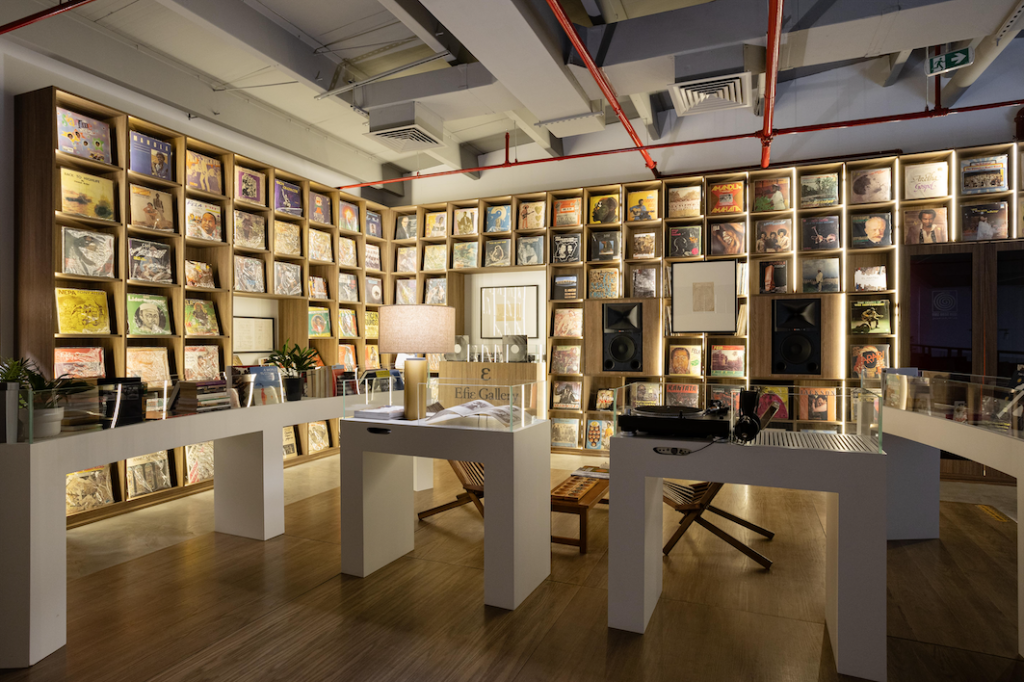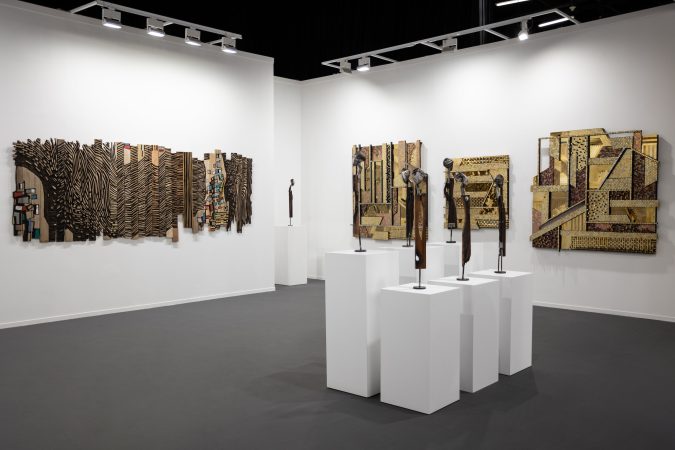Before February 2024, Marrakesh hadn’t experienced a downpour of rain in years. But heavy clouds would soon blanket the North-African city, and with the rain would come a flood of passports, dialects, and currencies from Brussels, Dehli, Lagos, London, Malabo… all belonging to the eclectic audience at the fifth edition of 1-54 Marrakesh. Having just made its debut on the Asian continent during Art Basel Hong Kong, the fair is just one example of how a shift in recent years has seen a refreshing expansion of art world activity.
It’s perhaps less unlikely to witness international bodies of work passing through the Global North – home to the historic centres of art trade – however, it seems as though growing ‘South-South’ relations are re-envisioning both curatorial practices and visitor experiences across regions. Take the recent ‘Translations: Afro-Asian Poetics,’ for example. Curated by Dr. Zoé Whitley, the exhibition, held at the Institutum, Singapore, is said to be the region’s first major institutional exploration of Afro-Asian artistic connections. Or, the most recent edition of the Sharjah Architectural Triennial, where Lagos-based architect and curator, Tosin Oshinowo, wove together space-making narratives from Accra to Ho Chi Minh City. Dubai, Sharjah’s better-known neighbour, is also a key player in the discourse.
An oasis of cross-cultural exchange, the emirate hosts over 200 nationalities; a figure that has no doubt influenced its burgeoning art scene. Kwame Mintah, co-director of Dubai-based contemporary African art gallery, Efie Gallery, joins me to explore the topic.
According to Mintah, “Efie Gallery’s typical audience is characterized by the broad diversity of Dubai” – equally comprised of returning locals and international visitors. The same is true of their globally distributed collector base, but with a commitment to fostering transnational engagement and many of their collectors based locally in the Middle East, an interdisciplinary approach has been central to cultivating a regional appetite for African art and culture.

‘Music, Fluidity and Reinvention, El Anatsui’s Record Collection’. Rekord Gallery installation image. Courtesy of Efie Gallery
‘Efie’ being the Twi word for home – the gallery has underscored its identity by taking full advantage of a permanent exhibiting space (based in Al Quoz), at a time when many young galleries, often in defiance of unsustainable operational costs, are choosing to emerge ‘without walls’. The former warehouse unit is divided: with revolving exhibitions displayed on the ground floor and “a permanent collection of originally pressed rare and important vinyl/shellac records” housed above. Most recently, it showcased the personal record collection or renowned Ghanaian artist El Anatsui, with Elastic Visions, curated by Faridah Folawiyo, displayed concurrently.
Questioned on this, Mintah recalls the varying ways in which visitors physically interact within the space. “When downstairs, navigation of the space is often conducted in silence, as absorption appears to be qualitative of visual art. In contrast, when visitors move upstairs toward the Rekord Gallery, the space produces conversation; visitors seem to feel more comfortable sharing their thoughts on a particular sound and how it relates to them”.
Folawiyo’s curation aimed to demonstrate the various ways in which contemporary African artists are pushing boundaries through both medium and concept – her collaboration echoing Efie’s devotion to plurality.

Hugh Findletar featured in Elastic Visions curated by Faridah Folawiyo, 2024
Managing dispersed audiences can also present a unique set of challenges. Logistical expenses and high booth fees are making international art fair participation increasingly inaccessible for many smaller-scale galleries. In response, Mintah champions the curation of online experiences, stating that, “our social media strategy is treated with the same curatorial care as our exhibitions”.
Today, galleries hold a unique position to innovate by continually exploring the relationships between context and content. Centring cross-cultural exchange can create myriad opportunities to meaningfully connect with collectors, collaborate with a wide range of industry professionals and ultimately encourage trade. With this, there is of course a great need for cultural sensitivity, but perhaps the overwhelming positive, as art historian Sidney Littlefield Kasfir phrases, is that “there are many more players and much more money at stake in a lot more places”.
References:
Kasfir Littlefield, Sidney, ‘Contemporary African Art’ (p. 251, 2020), Thames & Hudson
Elastic Visions curated by Faridah Folawiyo is on view at Efie Gallery until 27th May 2024
Are you a student or recent graduate eager to contribute your voice to ArtTactic’s Editorial vision? We’d love to hear from you!
Reach out to our Head of Editorial, Sandy Dewar (sandy@arttactic.com) for more information.

